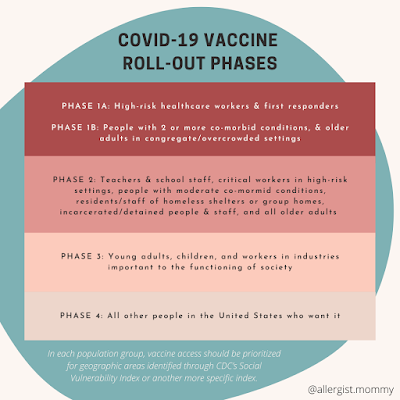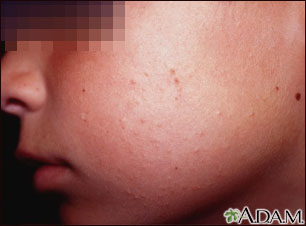How Will the COVID-19 Vaccine be Distributed?
After nearly a year of pandemic-induced isolation and loss, we have recently had the announcement of not only one, but two, candidate vaccines with impressive efficacy data.
Although this provides a glimmer of hope that we will eventually find our way out of this crisis, it is essential to recognize that there will not initially be enough vaccine available to immunize the entire population. Therefore, the vaccine will be distributed to the public in phases. You may be wondering where you or those you love lie on this index. Although this stratification is subject to change, here is what we know so far.
There will be 4 major phases for vaccine distribution:
1a. High risk health care workers (hospitals, long-term care facilities, etc.) and first responders (police, fire, EMT)
1b. People with 2 or more co-morbid conditions (eg: asthma, heart disease, immune deficiency), and older adults in congregate/overcrowded settings
2. Teachers & school staff, critical workers in high-risk settings, people with moderate co-morbid conditions, residents/staff of homeless shelters or group homes, incarcerated/detained people and associated staff, and all older adults
3. Young adults, children, and workers in industries important to the functioning of society
4. All other people in the United States who wish to be vaccinated
Within each of these phases, attempts will be made to prioritize vaccine administration to geographic areas identified through the Center for Disease Control's Social Vulnerability Index or another more specific index, should one be available at the time.
Remember, the goal of this phased approach is to prioritize vaccine administration not only to those who are at highest risk of having a bad outcome from infection, but also to protect those critical workers who need to be healthy enough to take care of the remaining public. This means it is unlikely that all members of your household will be able to be vaccinated simultaneously. Additionally, although the vaccine appears to be effective in preventing severe infection, it may still be possible to contract the virus and spread it to unvaccinated individuals even if you have been immunized. Therefore, vaccination will not be a free pass to go back to "normal", at least not right away.
We are approaching the home stretch, so please don't let pandemic fatigue get the best of you now. Keep up the good fight with distancing, masking, and supporting one another, so we can keep COVID-19 at bay long enough so that the vaccine can reach everyone who needs it before the virus gets to them first.
Ref: National Academies of Sciences, Engineering, and Medicine. 2020. Framework for Equitable Allocation of COVID-19 Vaccine. Washington, DC: The National Academies Press. https://doi.org/10.17226/25917.




Comments
Post a Comment
Thanks for taking the time to comment on this blog's posts! Let's keep the discussion engaging and free of frivolous advertising or vulgarity. It's a family show, folks!